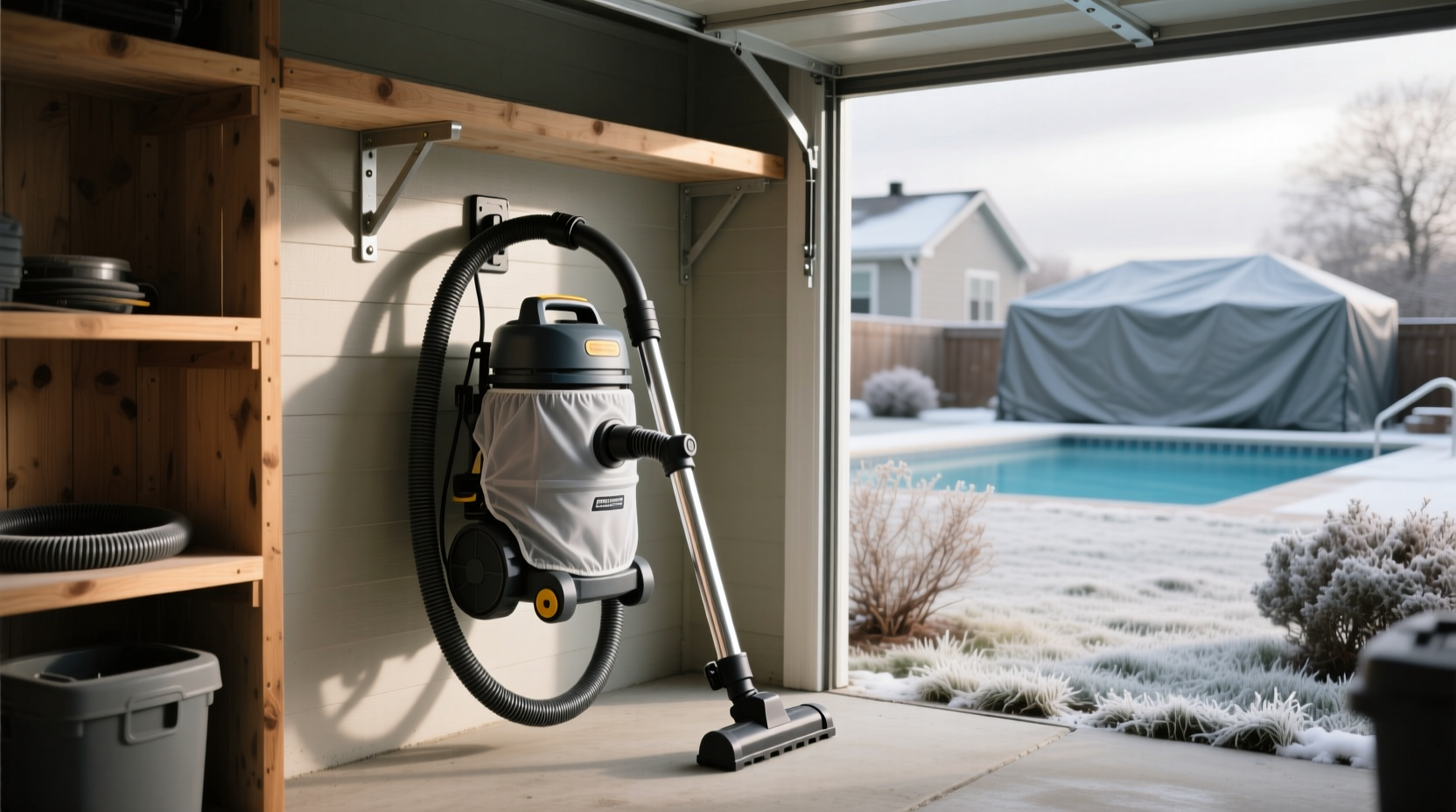Winter can be tough on pool equipment if not stored the right way.
Proper pool vacuum storage keeps your gear safe, prevents costly damage, and ensures it’s ready for next season.
Learn simple steps to protect your pool vacuum and extend its lifespan through the cold months.
Pool Vacuum Storage: Prevent Damage This Winter
1. Drain Every Drop of Water
Before putting your pool vacuum away, make sure every part is fully drained.
Leftover water can freeze, expand, and crack hoses or internal parts.
Shake out hoses, tilt the unit to release hidden moisture, and leave it in a warm spot for a few hours.
A dry vacuum is a safe vacuum.
2. Clean the Filters and Bags
Take time to clean the vacuum’s filter bags or cartridges before storage.
Dirt, algae, and debris left inside can harden or cause unpleasant odors by spring.
A gentle rinse with a hose and a quick air dry ensures your vacuum parts remain fresh and ready for use when the pool season starts again.
3. Coil Hoses Neatly
Never toss your pool vacuum hoses into a heap.
Coiling them neatly prevents bending, splitting, or kinks that ruin suction performance later.
Store them in large loops on a hook or wall mount.
This keeps them in good shape while freeing up floor space in your storage area.
4. Remove and Inspect Brushes
Brushes take on a lot of wear during the season.
Before winter storage, remove them and check for cracks or frayed bristles.
If they’re in good condition, wash and dry them thoroughly.
If not, replace them now, so you’ll be ready to vacuum effectively when pool cleaning season returns.
5. Store in a Dry, Sheltered Spot
Moisture and freezing temperatures are a vacuum’s biggest enemies in winter.
Keep your unit in a shed, garage, or storage box where it stays dry and protected from frost.
Avoid leaving it outdoors or in a damp basement.
Controlled conditions help extend the life of your investment.
6. Cover the Unit for Extra Protection
Even in storage, dust and pests can sneak in.
Use a protective cover or large plastic bag to shield your vacuum from dirt, insects, or accidental bumps.
This small step prevents unnecessary wear and ensures your vacuum looks and performs just as well next season.
7. Keep Cords and Accessories Organized
If your pool vacuum includes cords or small accessories, don’t leave them scattered.
Wind cords loosely, secure them with ties, and store accessories in a labeled container.
This way, everything is in one place, making setup simple when the warmer months arrive.
8. Avoid Extreme Temperatures
Never store your vacuum in direct sunlight or near heaters.
Extreme temperatures can warp plastic parts and weaken rubber seals.
A stable environment such as cool, dry, and shaded keeps the vacuum safe from seasonal damage, ensuring smooth operation when it’s time to clean your pool again.
9. Perform a Quick Pre-Storage Check
Before closing the lid on storage, check screws, wheels, and moving parts for wear.
Tighten any loose pieces and replace small broken parts now.
This prevents bigger issues later and guarantees that when you pull your vacuum out in spring, it’s ready to go without repairs.
FAQs
1: Can I leave my pool vacuum outside during winter?
No, leaving it outside risks freezing, cracking, and rust.
Always store it in a dry, sheltered place.
2: Should I oil or lubricate parts before storage?
It’s a good idea to lightly lubricate moving metal parts, but avoid over-oiling, which attracts dust.
3: How do I store vacuum hoses without damaging them?
Coil hoses in wide loops, hang them on a hook, and keep them away from sharp bends or weight.
The Wind Up
Proper pool vacuum storage during winter keeps your equipment safe, saves money on repairs, and extends its lifespan.
By draining, cleaning, and storing in the right conditions, you’ll avoid costly damage.
For more smart pool care tips, read our blog.
